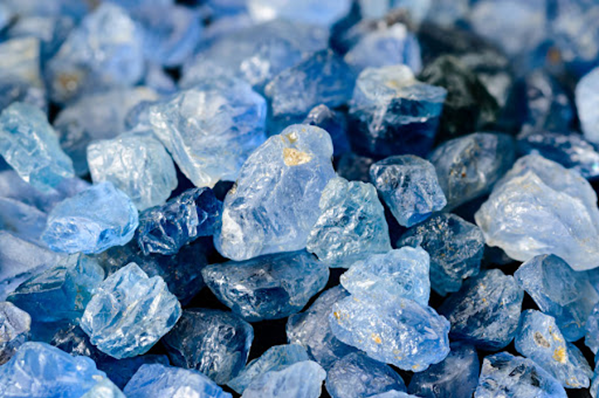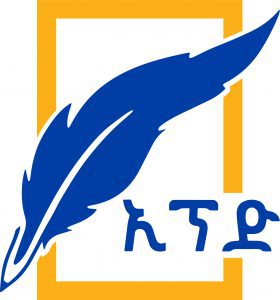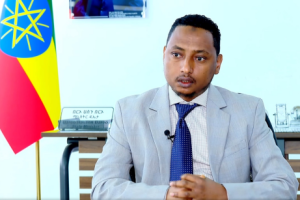
The Southwestern Ethiopian People’s Region is rich in various minerals, including gold and coal. Minerals and precious metals that are used as inputs for industry and construction are found in the region. Gold and coal are especially abundant in the Dawro and Konta areas.
Previous studies have also indicated that there are more than 36 types of minerals in the region. The Regional Mines and Energy Development Agency indicated that there are indicators of other minerals in the region.
Many manufacturers are engaged in the sector. It is known that a factory capable of washing coal at a high level was built and recently inaugurated and started operation in the Dawro and Konta areas, following the indicators of high coal reserves.
According to the Director General of the Regional Mines and Energy Development Agency, Gebremariam Setegn, the region is home to many minerals. The region is focusing on gold and coal, which are exported and save foreign exchange costs.
The Director General indicated that the region is working to achieve effective performance in the mining sector in the 2024/25 fiscal year. He stated that the region has been focusing on gold in particular in the first six months of the fiscal year.
He said it is planned to produce 300 kilograms of gold in the fiscal year and 150 kilograms in six months. Of this, 75.525 kilograms of gold was produced in six months. It is also planned to produce 100 thousand tons of coal in six months; 50 thousand tons was produced.
Both gold and coal production have been able to achieve about 50% of the plan. He mentioned that one of the main reasons for the failure to produce gold as planned and the decrease in production is illegality. Entities involved in illegal gold trading use various methods to export gold to neighboring regions and sell it in the Dima area of Gambella region.
The Director General also pointed out that coal producers are unable to produce at their full capacity due to the challenges they face. He mentioned that lack of fuel supply is a challenge to some extent; not all producers are getting the fuel they need in the right quantity and quality. As a result, they have not been able to devote their full time to coal washing operations. He also stated that lack of strong support and monitoring by the sector’s bodies from the region to the district is another gap.
The Director General announced that the region is working to collect revenue from land rent, royalties, licenses and other services in the mining sector during the current fiscal year. He mentioned that it was planned to collect 20 million Birr in revenue in six months, and 35 million Birr was achieved.
He mentioned that the macroeconomic reform is the main reason for the revenue performance being above the plan; and the amount of gold entering the National Bank has increased significantly since the implementation of the macroeconomic reform. This has led to changes in performance.
According to the Director General, many producers in the region have obtained licenses and are engaged in mining development. During the six months, 12 traditional and 58 special small producers have been engaged in the mining sector. He also mentioned that the licenses of 32 producers who performed very poorly in July of the fiscal year were revoked, and warned that action would be taken against producers who did not have a convincing reason in the future.
He recalled that there were many traditional producers in the past, and that their number may increase as producers who are organizing to produce gold through traditional methods join the development recently. Most of the small-scale producers have not started work, and the main reason for this is lack of machinery or lack of investors who will work with them on a 70/30 share basis. The producers who provide a convincing reason can be thoroughly examined and investigated; but action will have to be taken against those who do not.
Although more than 20 coal producers have been licensed, only eight producers, four each in Dawro and Konta zones, have started production. It is expected that production will increase in the coming months as those that were under investigation have recently been put into production. In particular, the recently inaugurated ET Mining Factory is expected to increase production in the remaining months.
The Director General said that since the mining sector creates many job opportunities, many works have been done in terms of job creation; work is being done to create job opportunities for about seven thousand unemployed people in the current fiscal year. He recalled that it was planned to create job opportunities for about 3,500 citizens in the first half of the year, but the performance of the first half of the year was low.
He also mentioned that there is a huge gap in the lower structure of the bodies that are organized to produce construction minerals (sand, stone, etc.). He said that they will continue to work diligently with continued support and monitoring. This sector will create more job opportunities than is required.
The Director General pointed out that no study has been conducted on the mineral resources in the region. Since the region was newly established in November 2022, no study has been conducted on the size of the mineral reserves in the past.
The minerals are usually extracted through traditional methods or the investors are conducting their own research and entering into operation. Some studies have been conducted with the Geological Institute of Ethiopia and the minerals will be utilized based on the results of the studies.
There are deposits of coal, gold and other types of minerals in many places in the region. In Bench, Guraferda, Sheko Zones and Yeki Woreda, there are indicators of precious minerals. Activities will be carried out to identify these and enter into operation.
According to the Director General, a market relationship has been established between coal producers and ET Mining, and that four producers producing coal in the Dawro area will supply it to ET Mining. He said that those in the Konta zone will take it to another place and sell it, and that work is being done to link them with the factory.
The quality of coal being produced in the region varies. The calorie content of the coal can be 6,000, 2,000 and below. ET Mining Factory takes these coals with different calorie content and washes them to produce coal with a calorie content of about 5,800 and supplies them to cement factories.
Gebremariam said that one of the main challenges in the mining sector is the spread of illegal gold mining, and for this, it is necessary to continue to strengthen the support and monitoring that is being carried out by going to the place where gold is washed.
He also pointed out that efforts should be made to reach an understanding with the producers so that small and traditional gold producers engaged in the sector can calculate their costs and bring gold equivalent to that to the bank. He also pointed out that there is a limitation related to human resources to monitor and support the sector properly, and another challenge is lack of budget. He indicated that efforts are being made to do as much as possible despite the difficulties.
The Director General said that coal producers are not producing at their full capacity; support and monitoring activities will continue to be strengthened to ensure that they produce at their full capacity.
Those who have obtained permits and have not started work will be given a one-month warning, and those who do not start work within this period will have their permits revoked and the land returned to the land bank.
More work will be done to increase productivity by clearing the licenses of those who have obtained permits. Those who have obtained new permits will be allowed to start work. Efforts are being made to establish a system that will prevent and control illegal activities, starting from the kebele leadership, in a way that involves the community.
BY BACHA ZEWDIE
THE ETHIOPIAN HERALD SUNDAY EDITION 16 MARCH 2025





